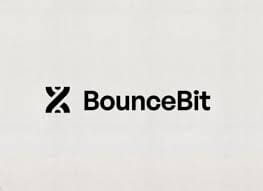In the past few years, the token economic models of on-chain projects have generally looked like this:
First issue tokens;
Scoop up the benefits;
Then a mess.
It's not that nothing was done, but rather that no one could link 'protocol revenue' with 'token value'; most coins can only rely on FOMO sentiment for a short surge.
But BounceBit seems to be different. You may not have noticed, but it has initiated an action that I think is very worth studying: the BB token buyback plan.
Moreover, this is not just talk; real money is being used to buy tokens from the protocol's revenue.
Today I want to talk about this: How does the BB buyback mechanism work? What does it mean for the token price and the BB you hold?

What is protocol repurchase? Why is it important?
Simply put, it is:
The project protocol has income, not all of it is used for development, subsidies, or salaries, but a portion of the income is actively used to buy back their own tokens, reducing circulating supply and enhancing market demand.
You can think of it as an 'on-chain dividend + market cap management'; this mechanism has long been mature in traditional finance, but in the DeFi world, there are not many projects that can truly do it.
Why? Because most projects don't have 'protocol income' at all, or even if they do, they don't intend to use it to return value to the tokens.
How does BounceBit do it?
According to the data I've found, BounceBit's approach can be said to be quite 'honest':
The protocol will use a certain percentage of income each month to repurchase BB from the market;
Repurchase does not lock up, but directly destroys or reinvests into the mining incentive pool;
All repurchase records are on-chain and can be checked, completely transparent;
The repurchase amount is linked to TVL, income, etc., which belongs to 'following the system'.
For example, in a certain week, they announced that they repurchased 8.87 million BB from the market, which is no small number.
Where does the money for repurchase come from?
This is where BounceBit is quite solid:
Their income does not rely on 'minting tax' or 'transaction fees + signaling', but on the actual income sources of the protocol:
BB Prime profit structure sharing
On-chain strategy pool income
Structured financial product management fees
Node staking and verification income
This means: as long as the ecosystem is active, TVL continues to grow, and profits are continuously generated, it can form a closed loop of 'income - repurchase - boosting confidence'.
Can the repurchase mechanism stabilize the token price?
This is a question that many people are concerned about. My personal view is:
Cannot pump in the short term, but can support in the long term.
You should know that there are very few projects that truly take 'token price' seriously; most people think:
Develop first with money;
Issue tokens when there's no money;
When the token drops, just say 'look at the long term'.
But BounceBit clearly states: we buy back BB with actual income every month; this action is persistent and systematic.
From a supply-demand logic perspective:
The total amount of BB in the market is fixed;
A portion is destroyed or locked each month;
Selling pressure decreases, buying pressure increases;
Naturally forming a 'slow bull bottom' over the long term;
This method cannot surge 10 times like some air coins, but it does establish a 'predictable value capture path'.
What impact does the repurchase have on ordinary users?
If you currently hold or are considering buying BB, the repurchase mechanism may bring about these changes:
Long-term holding gives confidence: knowing that the project team is not giving up on the tokens, but is supporting it with 'real money';
Reducing circulation pressure: although there are unlocks, repurchases offset selling pressure;
Enhanced sense of participation: you are not a passive holder, but an ecological sharer (the repurchase uses the profits generated from your participation in the product);
Reduced speculative behavior: long-term players are more likely to stay, while short-term speculators find it hard to influence prices;
This significantly enhances the overall health of the community.
Can this logic be verified?
BounceBit announces repurchase data weekly, and it can also be checked on-chain. If you are a technical user, you can track:
Official repurchase address;
Repurchase time and frequency;
Average repurchase price;
Whether it is really used for destruction or re-staking;
For me, this kind of 'verifiability' is much more important than verbal promises.
In summary: repurchase is not a gimmick, but a profile of the project's strength.
In the world of cryptocurrency where 'slogans are rampant', BounceBit has proven itself with an extremely old-fashioned yet effective method:
I won't just issue tokens; I am also willing to spend my earned money to buy back the tokens.
What this represents are three keywords: responsibility, transparency, sustainability.
If you are looking for a project that is not based on emotional hype but is supported by actual profit logic, then BB's repurchase mechanism is an aspect you should seriously evaluate.
After all, there are really not many projects that can continue to repurchase in a bear market.
@BounceBit #BounceBitPrime $BB

